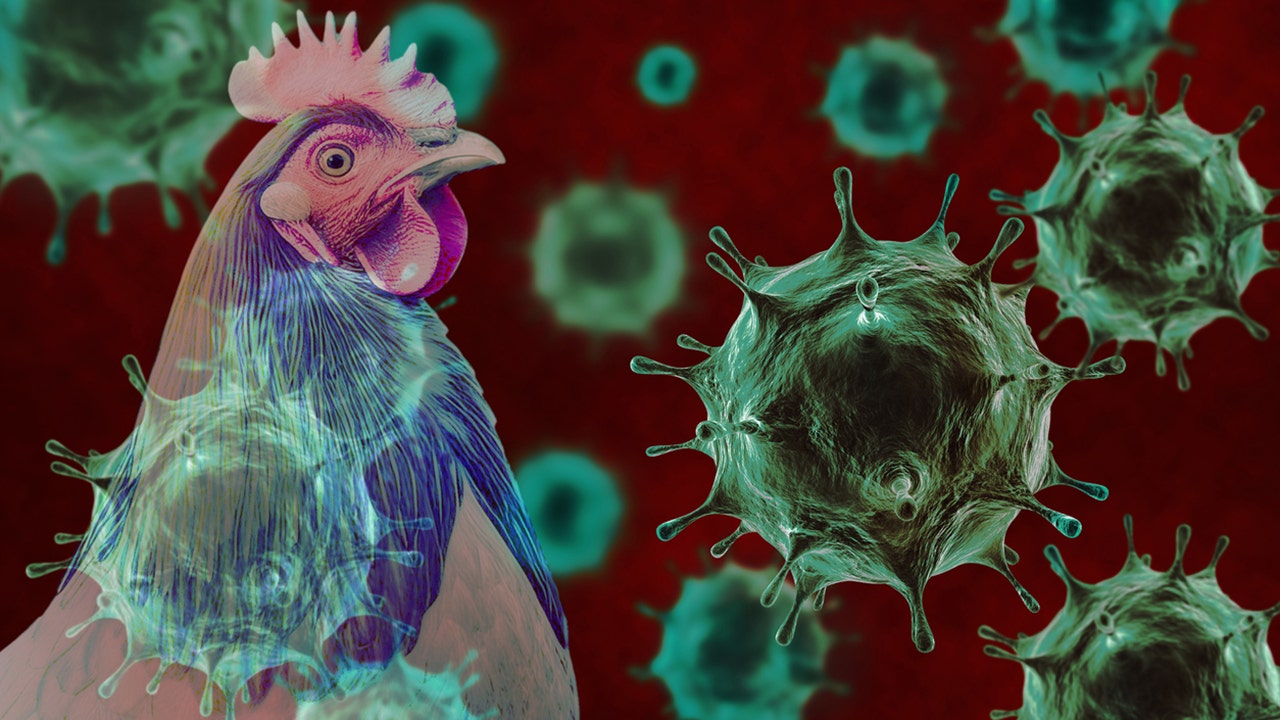Avian influenza A (H5N1), commonly known as bird flu, continues to make its way through the U.S., as Hawaii joins the list of affected states.
The Hawaiian Department of Agriculture (HDOA) reported last week that bird flu was confirmed in a backyard flock of various birds in Central Oahu.
At least 10 birds — including ducks, geese and a zebra dove — were reported dead on the property on Nov. 12 and were then sent for confirmatory testing.
BIRD FLU LEAVES TEEN IN CRITICAL CONDITION AFTER COUNTRY’S FIRST REPORTED CASE
The department stated in a press release that highly pathogenic avian influenza (HPAI) causes “severe illness with a high mortality rate among affected birds.”

At least 10 birds infected with bird flu were reported dead in Oahu, Hawaii. (iStock)
The presence of bird flu was detected through the National Wastewater Surveillance System, marking the first confirmed detection in Hawaii.
The HDOA has issued a quarantine order for the site of infection, requiring all birds on the property to be “depopulated and the premises cleaned and disinfected.”
FIRST CASE OF HUMAN BIRD FLU DIAGNOSED WITHOUT EXPOSURE TO INFECTED ANIMALS, CDC SAYS
It is confirmed to be the same strain that has infected dairy cows and domestic poultry in U.S. mainland states, including California.
As of Nov. 18, California has confirmed 27 human cases of bird flu, according to the California Department of Public Health (CDPH).
The California Department of Food and Agriculture also confirmed bird flu in 335 dairy farms in Central California as of that same date.
“We can’t afford to give this virus more opportunities to spill over into humans.”
These outbreaks have affected more than one-fourth of California’s farms, per reports, boosting the national total in dairy herds to 549 in 15 states.
The CDPH confirmed on its website that the agency is monitoring bird flu in animals and people working closely with poultry and cows, and has distributed protective gear to these individuals.

Bird flu spread can occur by drinking raw milk; touching raw milk, cow or bird feces, and other contaminated surfaces; and handling sick or dead animals infected with the virus. (iStock)
Meanwhile, Arizona reported its first bird flu outbreak on Nov. 15 in poultry at a commercial farm in Pinal County.
The farmers spotted signs of illness in their poultry on Nov. 11. Officials confirmed that any eggs produced after the onset of illness have not entered the food supply.
PIG INFECTED WITH BIRD FLU FOR FIRST TIME IN US, HEALTH OFFICIALS CONFIRM
Experts believe the surge stems from the Pacific Flyway, where birds are heading south for winter. The potential of human infection is less of a threat, according to state agencies.
Hawaii’s Department of Agriculture reassured that Hawaiians are “unlikely to get sick” from bird flu at this time, as human illness is “uncommon.” Symptoms among humans infected in the U.S. have been mild, the agency added.
California’s Department of Public Health has warned that while human infections are rare, it can happen if the virus enters a person’s eyes, nose or mouth.

The CDPH confirmed that the agency is monitoring bird flu in animals and people who work closely with poultry and cows. (iStock)
People can also be infected by drinking raw milk; touching raw milk, cow or bird feces and other contaminated surfaces; and handling sick or dead animals carrying the virus.
Symptoms of bird flu in humans can include eye redness or discharge, cough, sore throat, runny or stuffy nose, diarrhea, vomiting, muscle or body aches, headaches, fatigue, trouble breathing, high fever, pneumonia and seizures, according to medical experts.
Expert calls for ‘decisive action’
Sam Scarpino, PhD, director of AI and life sciences at Northeastern University in Boston, said he considers the increased H5N1 influenza cases “quite concerning.”
For more Health articles, visit www.foxnews.com/health
“From ducks and geese in Hawaii and dairy cows in California to human cases in the U.S. and a severe human infection in Canada, it’s clear that the avian influenza outbreak is getting worse, not better,” he told Fox News Digital.
“We can’t afford to give this virus more opportunities to spill over into humans — and the economic costs on the agricultural side are piling up.”

A researcher collects samples of wildlife where the H5N1 bird flu virus was detected at Chilean Antarctic territory in Antarctica. (Reuters/Instituto Antartico Chileno)
Scarpino suggested that the federal government must take “decisive action” regarding testing and serosurveillance (estimates of antibody levels) of missed infections and wastewater, as well as vaccinating dairy cows against the virus.
“We also need to ensure that farm workers are protected and should strongly consider offering them access to H5N1 vaccines,” he said.
“It’s clear that the avian influenza outbreak is getting worse, not better.”
The expert added that it will be more difficult to differentiate bird flu cases from non-bird flu cases during the seasonal influenza season.
“We need investment from the federal government to ramp up public health laboratory test capacity and educate physicians and hospitals around the need to test influenza A positive samples for H5N1,” Scarpino said.
CLICK HERE TO SIGN UP FOR OUR HEALTH NEWSLETTER
Dr. Jacob Glanville, CEO of Centivax, a San Francisco biotechnology company, urged people to “stay away from any dead birds and sick birds, pigs or cows” as a preventive measure, and to keep pets away from wild animals.
“This H5N1 has proven extremely lethal in ferrets and primates, and many of the infected birds have been found dead,” Glanville told Fox News Digital. “Researchers have shown it to be capable of airborne transmission between mammals.”

“Stay away from any dead birds and sick birds, pigs or cows,” an expert cautioned. (iStock)
Among the 52 Americans who have been infected with bird flu, Glanville noted that almost all of them were farm workers who had contact with cows or birds.
CLICK HERE TO GET THE FOX NEWS APP
“Historically, from 2003 to 2024, 261 H5N1 infections have killed about 50% of the infected, being very lethal but not easily transmissible from human to human,” he said.
“Scientists don’t understand why this current strain is causing only mild infections so far, or how many mutations it would take to make it human-human transmissible and more lethal.”

